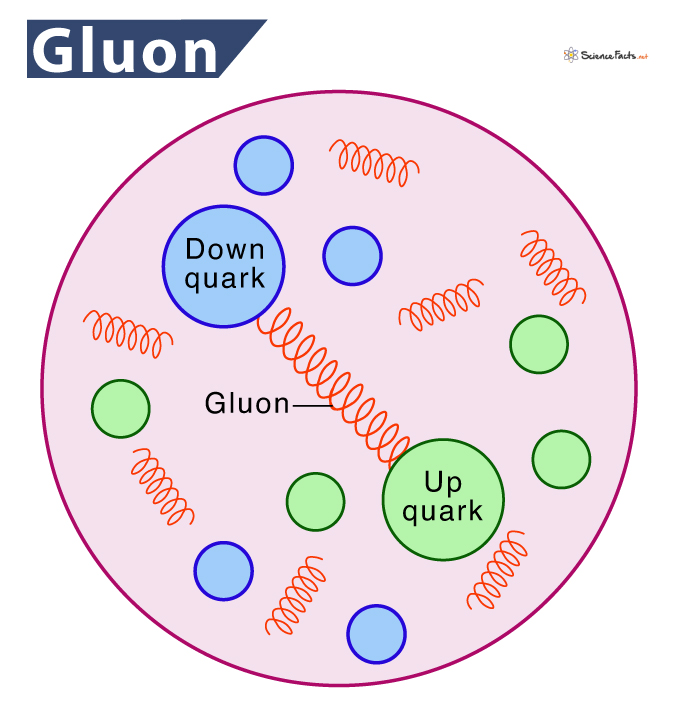They are fundamental particles and thus cannot be broken down into smaller ones. They are named gluons because these particles function as the ‘glue’ that holds the nucleus and its constituent baryons together. A Feynman diagram often represents gluon interactions. The emitted gluons are shown as helices that generate a color change for the quarks. They are assumed to be bi-colored, carrying a unit of color and a unit of anti-color. Gluons convert one color of the quark to the other and vice versa, as shown in the diagram below:
Common Properties of Gluons
How are Gluons Involved in Forces within the Atom
The force connecting positive and negative color charges is a strong nuclear force. Much more potent than the three other fundamental forces: gravity, electromagnetism, and the weak nuclear forces. Because of such high nuclear forces, it is tough to separate quarks and gluons inside a composite particle, making the particle extremely stable. The only way of separating is by creating a state of matter known as quark-gluon plasma. In such plasma, the density and temperature are very high, which allows protons and neutrons to melt.
